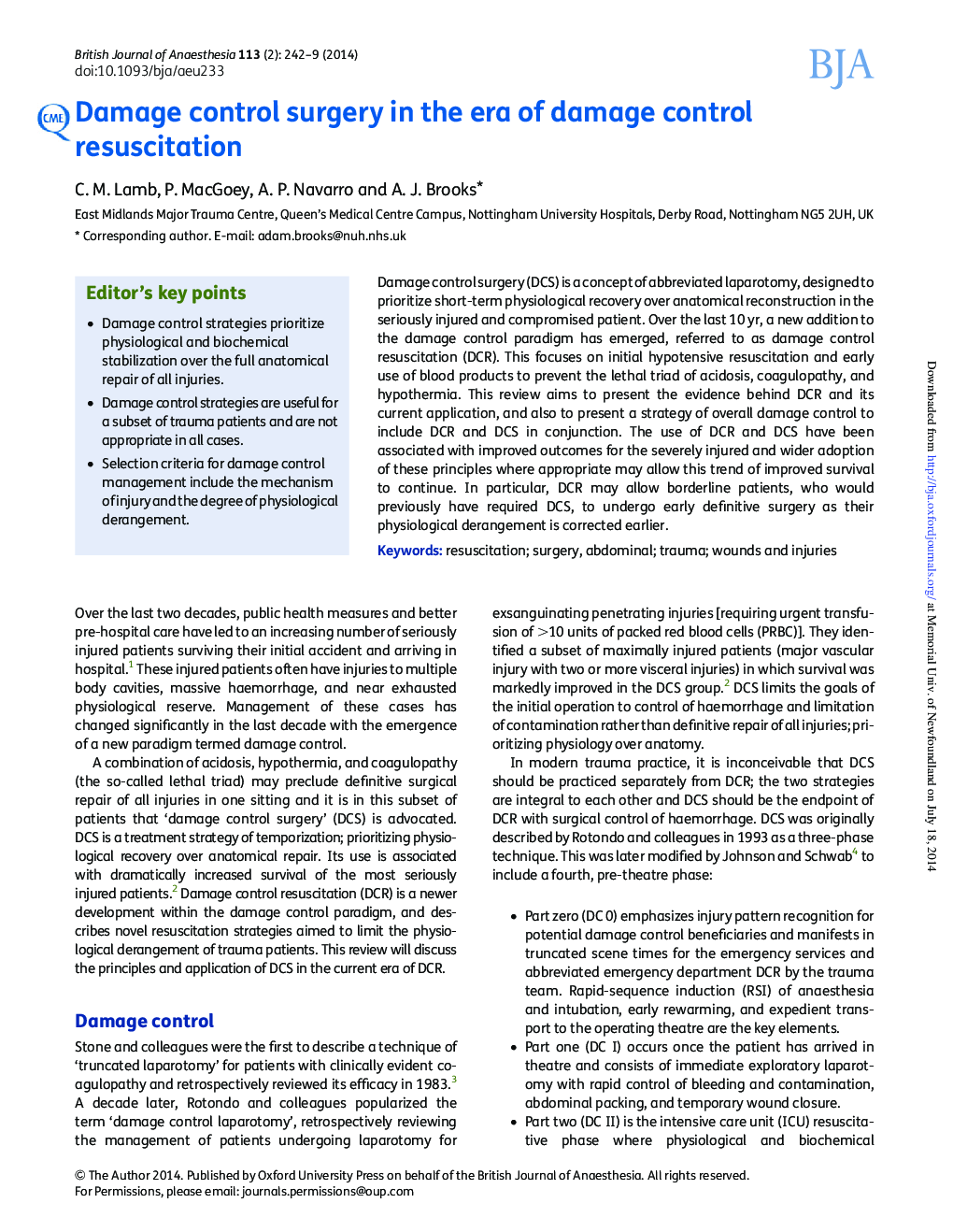| Article ID | Journal | Published Year | Pages | File Type |
|---|---|---|---|---|
| 8932548 | British Journal of Anaesthesia | 2014 | 8 Pages |
Abstract
Damage control surgery (DCS) is a concept of abbreviated laparotomy, designed to prioritize short-term physiological recovery over anatomical reconstruction in the seriously injured and compromised patient. Over the last 10 yr, a new addition to the damage control paradigm has emerged, referred to as damage control resuscitation (DCR). This focuses on initial hypotensive resuscitation and early use of blood products to prevent the lethal triad of acidosis, coagulopathy, and hypothermia. This review aims to present the evidence behind DCR and its current application, and also to present a strategy of overall damage control to include DCR and DCS in conjunction. The use of DCR and DCS have been associated with improved outcomes for the severely injured and wider adoption of these principles where appropriate may allow this trend of improved survival to continue. In particular, DCR may allow borderline patients, who would previously have required DCS, to undergo early definitive surgery as their physiological derangement is corrected earlier.
Related Topics
Health Sciences
Medicine and Dentistry
Anesthesiology and Pain Medicine
Authors
C.M. Lamb, P. MacGoey, A.P. Navarro, A.J. Brooks,
